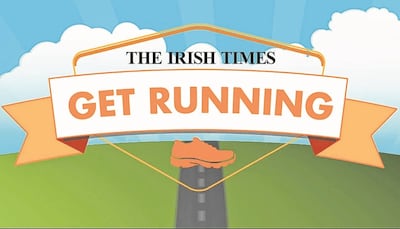The return of sport and reopening of exercise facilities as part of the easing of coronavirus quarantine measures has been a huge positive for those who have missed this during lockdown.

The available data from fitness tracker companies indicate a more sedentary lifestyle in Ireland over the three-month peak of the pandemic.
The resultant physical deconditioning or at least change to our typical exercise routine and fitness level can lead to injuries in our quest to return to our pre-lockdown activity levels.
In an attempt to reduce this risk, here are some useful tips:
1. Strength is important
Research indicates that a sedentary lifestyle can have a negative impact on muscle strength and mass. Evidence suggests that just one week of total bed rest in a healthy adult can result in a 1.4kg loss of muscle mass and an almost 7 per cent reduction in one-rep max strength. Unfortunately, a reduction in muscle strength is associated with an increased risk of muscle injury. So bear in mind that a sedentary lifestyle may mean we are returning to action a little weaker.
2. Track your numbers
Strength is one measure that chartered physiotherapists use to inform their return to activity guidelines for each individual. However, other markers can be used to guide a safe return to action. Tracking your exercise duration, distance, intensity and frequency are also key to avoiding injury. Many people have access to this via their fitness trackers or weight-training diaries. This information is useful to gauge your baseline levels pre-lockdown. We recommend that you start at 50 per cent of your pre-lockdown levels and gradually increase by no more than 15 per cent per week in any of your tracked markers.
3. Ease back into exercise
There are plenty of examples in high level sport where all this useful tracking information has been bypassed in order to rush in a return to competition. The Bundesliga, Germany’s top football league, was one of the first to re-start post lockdown. In their opening round of matches there was a well-publicised increase in muscle injuries compared to their norm.
During lockdown, even professional athletes had to switch up their routine to road running and independent fitness sessions with reduced intensity. When the quick return to competitive matches was announced, the change from road running to more intense accelerating, decelerating and change of direction on the football pitch is suggested to have led to this injury count. So, restart slowly and gradually reintroduce your sport-specific exercise. Ensure that you take 48 hours off between each activity to check in with how your body feels and allow time for adequate recovery. Although the mind is willing, the muscles are weak!

4. Re-establish a healthy routine
Synonymous with a good recovery and better performance is sleep and diet. Many people now have a different routine to this time last year with more of us working from home. It is very important that you establish a healthy routine as this can affect your risk of injury. Research has demonstrated that athletes getting less than eight hours sleep have an increased injury rate and reduced athletic performance. To allow better sleep we need to be mindful that our diet, caffeine, and alcohol consumption reduces our sleep quality and duration. In addition, having large meals late in the evening can also negatively affect our sleep. A healthy diet and sleep routine will make sure you get the most from your activity and reduce your injury risk.
5. Set realistic goals
Many people have used this time to set new individual or group exercise goals such as a combined cycling distance or running targets. Goals are obviously a great way to maintain motivation, but they need to be realistic. Use the aforementioned advice regarding gradual progression, tracking fitness markers and allowing for appropriate recovery to create or review your training goals for the year. The acronym used regularly in health care is Smart goals – consider a personal goal that is Specific, Measureable, Achievable, Realistic and Timed. An example would be, “I want to run a 5km run with an average 5 minute/km speed by December 1st, 2020’’. Setting appropriate goals will allow you to build fitness gradually and reduce the risk of injury.
6. Listen to your body
Listening to any niggles in your body is also important in remaining injury free. In Beacon Hospital we have a physiotherapy department and sports laboratory full of highly skilled musculoskeletal physiotherapists and exercise physiologists who are experienced in treating a variety of injuries. Training programmes are based on a comprehensive assessment, including VO2 max, Isokinetic strength testing, video analysis and orthotic prescription using 3D imaging.
Anthony Pierce is a senior musculoskeletal physiotherapist at Beacon Hospital

Sign up for one of The Irish Times' Get Running programmes (it is free!).
First, pick the eight-week programme that suits you.
- Beginner Course: A course to take you from inactivity to running for 30 minutes.
- Stay On Track: For those who can squeeze in a run a few times a week.
- 10km Course: Designed for those who want to move up to the 10km mark.
Best of luck!








